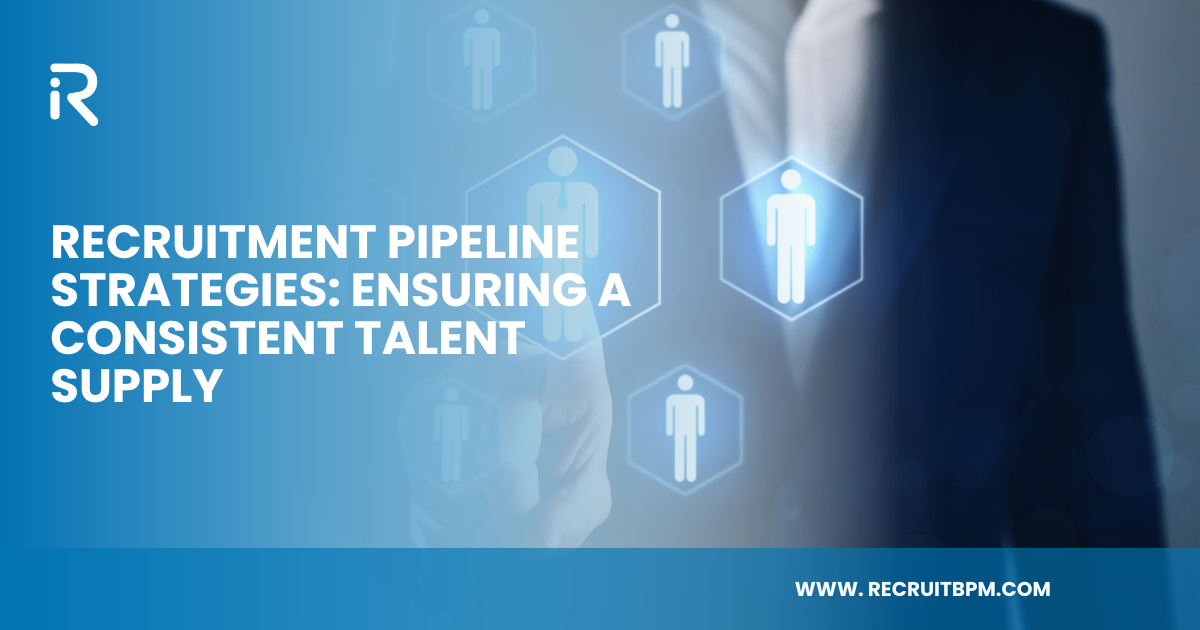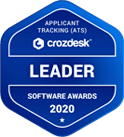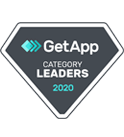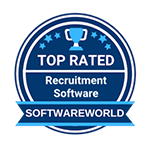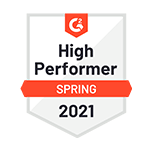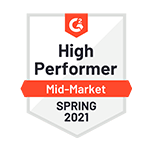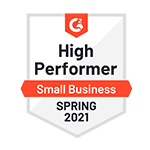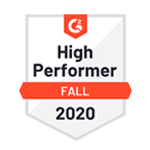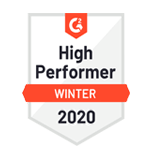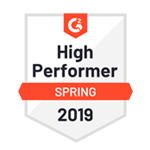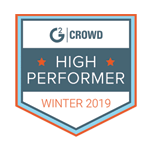Hiring shouldn’t feel like catching water with a sieve. Yet, so many teams react, scrambling each time a spot opens. The result? Missed chances, rushed choices, stress that lingers.
A recruitment pipeline isn’t about adding more resumes to a pile. It’s a living system—names, conversations, relationships—always moving, sometimes quietly, sometimes fast. Think back to last quarter: one SaaS company found its best engineers through ongoing conversations, not job ads. Consistent talent doesn’t come from luck but from a structure built for the long haul. That’s how companies stop chasing and start choosing.
Introduction: The Critical Role of the Recruitment Pipeline in SaaS
Growth in SaaS rarely waits for tidy timelines. One month, a product update sparks a flurry of sales calls. Next, a key engineer leaves on short notice. Suddenly, the hiring team is swallowed by urgency—old resumes, half-finished interviews, and phone screens stacked on top of demo days.
A real pipeline in recruitment changes the pace. It operates steadily in the background, at times subdued and unobtrusive, at others, marked by a quiet yet persistent intensity. The best managers know the difference. They don’t just fill seats—they build a bench, often months before the market shifts.
When a SaaS company lands its biggest client, roles are filled in days, not weeks. The product team barely breaks stride. Agility isn’t a buzzword—it is muscle memory. Miss the pipeline, and every hiring cycle feels like déjà vu. When you build it right, growth becomes less about guesswork and more about sustained momentum—that’s what sets scaling companies apart from those that stall.
Understanding the Recruitment Pipeline
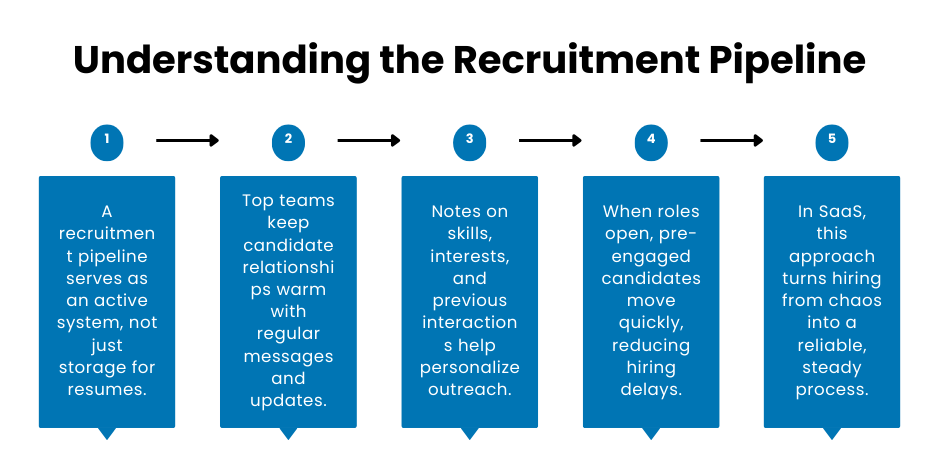
More often than not, hiring feels like the rain that is needed for a drought. The need builds, the clock ticks, and every empty seat echoes. That’s where a recruitment pipeline steps in – a system, yes, but more like a living chain of conversations and quiet check-ins than a static list. Names aren’t just stored; they’re remembered. Stories, skills, and small notes on what lights a candidate up—those details set the good pipelines apart from the rest.
Some teams use a pipeline in recruitment as a catch-all for resumes in a folder. The best teams, though, treat it like tending a garden. Early interest is watered with occasional messages. Promising leads get sunlight—maybe a quick project, maybe a casual chat. When a role opens, there’s no mad scramble. The groundwork’s done.
A talent pipeline example? One SaaS company made a habit of sending quarterly “how’s it going?” notes to past interviewees and hackathon standouts. Six months later, when a competitor poached their lead developer, the replacement started within a week. No panic. Just process, built on relationships that never quite went cold.
A pipeline in recruitment isn’t flashy. Sometimes it’s quiet, almost invisible. But when the next big project lands, it’s the reason your team moves, not stalls. And that edge, in SaaS, can be everything.
Pipeline in Recruitment: Definitions & Key Stages
Definition
A pipeline in recruitment is the full journey a candidate takes from that first connection to their first day on the job. It’s not just a tracker or a fancy spreadsheet—it’s the structure that keeps hiring from turning into chaos when business moves fast.
Key Stages
- Sourcing: It usually starts with sourcing. Some candidates are found through job ads, others come from personal networks, or a referral over coffee. The next stage, screening, cuts through the noise—resumes get a real look, maybe a call to check if the basics are there. Sometimes you lose good people here if you’re not paying attention.
- Interviewing: This is where things get interesting. It could be a single call or a whole panel. Sometimes it’s a technical challenge, just a conversation to see if the fit is real. No two interviews feel the same, and the best candidates sometimes surprise you at this stage.
- Offers: This part can drag negotiations, counteroffers, and second thoughts. Some candidates accept fast, others vanish, or hedge. The process rarely feels neat.
- Onboarding: The last stage is onboarding. Not just paperwork. It’s making sure the new person actually feels part of the team—access, introductions, a sense of belonging on day one.
Why a Strong Pipeline Matters in SaaS
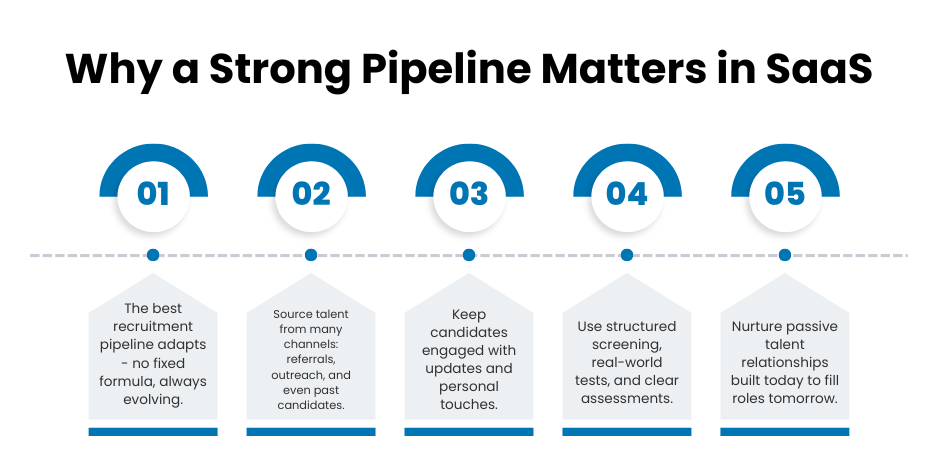
Scaling in SaaS is rarely a straight line. Teams double, projects shift, and sometimes the best people leave just as growth picks up speed. Without a reliable recruitment pipeline, hiring turns into a scramble—panic calls, rushed interviews, missed chances. Skill gaps widen. Product launches stall. A strong pipeline in recruitment flips the script. It keeps talent moving in, even when turnover hits or new demands pop up overnight.
The right candidates aren’t just found—they’re already in conversation, already a step ahead. SaaS companies with a steady pipeline don’t just react to change—they shape it. That edge is the difference between scrambling for talent and setting the pace, quarter after quarter.
Industry Trends: How Talent Pipelines Are Evolving
The old recruitment pipeline was a grind—endless resumes, HR inboxes overflowing, and hunches guiding too many choices. Now, software sorts the stack before breakfast. Automation nudges candidates, schedules interviews, and reminds hiring managers that their shortlist isn’t going to review itself. Less chasing, more connecting.
Remote hiring? That’s changed the stakes. Teams stretch from Toronto to Bangalore. Suddenly, a recruiter’s morning coffee comes with video calls across three time zones. Geography stops being a wall. It turns into a window. A SaaS company recently ran a midnight code challenge for developers—half the finalists weren’t even in the same hemisphere as their future manager.
Data’s the new compass. Gut feel gave way to dashboards—conversion rates, drop-off points, and sourcing stats. A talent pipeline strategy built on tracking what works, not what’s always been done, starts to pay off.
A living pipeline doesn’t just fill jobs. It learns, adjusts, and keeps pace with change. One month, the bottleneck’s at screening. Next month, it’s onboarding. The point isn’t perfect flow—it’s relentless motion. The best teams check the data, tweak the process, and move on. The future isn’t waiting for anyone. The smart ones are already hiring there.
Building the Best Pipeline for Recruiting
There’s no magic formula. The best pipeline for recruiting is rarely linear. Steps overlap, priorities shift, and people don’t always do what you expect.
Sourcing is noisy. Sometimes the right candidate comes from a referral at a backyard barbecue. Other times, it’s a cold reach on a Monday morning. One manager spent weeks chasing resumes online—then hired a nurse who’d left a thank-you note after a failed interview the year before. People remember how you treat them.
Sequence matters. Stack too many interviews, and candidates drift. Move too fast, you miss the subtle signs—a pause before answering, a question about team culture, a resume gap that’s a story worth hearing. A hospital tried rigid scheduling: every applicant, same process, same pace. They lost more than half to competitors who moved with intent, not just speed.
Nurturing isn’t a buzzword—ask anyone who’s waited weeks for an update. A talent pipeline example: A tech company started sending tiny video updates between steps. Not fancy. “We’re still reviewing, and thanks for your patience.” Rejections stung less. People want a signal, not silence.
Checkpoints change things. A recent study found that organizations that ask for candidate feedback after every stage get better hires who stay longer. Surprising? Maybe. The old myth says speed wins. Turns out, memory does.
The best pipeline for recruiting is messy, a little unpredictable, and always evolving. It’s not about perfect steps. It’s about people who want to come back—even if they’re not chosen this time. That’s the real win.
Sourcing and Engaging Top Talent
The job post goes live. Silence. Days pass, and the inbox fills with the usual—half on autopilot, a few who barely skimmed the role. The real gems? They’re somewhere else. One came from a late-night Slack chat; another, a referral from a nurse who’d just joined the team. The best recruitment pipeline never relies on one channel.
Conversations matter more than checklists. A manager still talks about the time a candidate replied with a story, not a resume. That candidate got the call and skipped the stack. Updates work the same way—one recruiter made a habit of sending a two-line note after every interview, even if there was no news. Fewer dropouts, warmer responses later.
It isn’t about chasing. It’s about staying on someone’s radar, so even if they say “not now,” the door remains open. Sometimes, the next great hire comes back around. Sometimes, they bring a friend. That’s the pulse of a real pipeline—never perfect, always in motion.
Screening and Assessment Best Practices
A sharp pipeline in recruitment relies on clear screening steps and smart tools. Automated assessments flag technical strengths before anyone hits “schedule interview.” Structured interviews—same questions, same scoring—even the field and reduce bias. This is an apt talent pipeline strategy. It tends to keep the process clear. If we dig deep, we can find an abundance of recruitment pipeline examples.
Many companies are discovering that the hiring process can be greatly accelerated by integrating real-world scenario questions with AI-driven skills tests. The goal isn’t just to move candidates along. It’s to spot who thrives under pressure and who fits the culture, so the pipeline delivers more than just resumes.
Nurturing Passive Candidates
A resume lands on your desk. The name isn’t familiar, but their portfolio has that edge—the kind that makes you pause. That’s the payoff from months, sometimes years, of quiet connection. The strongest teams don’t just chase active applicants. They cultivate a bench—think of a talent pipeline example where a recruiter checks in every few months, not with job offers, but with industry news, a quick note about a new SaaS feature, or a genuine question about the market. No sales pitch. Just a conversation that keeps the relationship alive.
When the right role finally opens, there’s already trust. No need for awkward introductions or rushed explanations. That passive candidate, once a distant contact, is already halfway convinced because the groundwork was laid long before an offer ever appeared. That’s how a future hire becomes a familiar face, not a roll of the dice.
Data-Driven Pipelines: Metrics, Templates, and Automation
A cluttered inbox. Another Monday, twenty resumes from last week, maybe a few from spring. Some are still waiting for a reply. It’s easy for things to slip. That’s what most don’t say out loud – chaos is the default. The teams that fight it don’t just gather data. They let it sting, then do something about it.
A product manager at a fast-growing SaaS startup kept a whiteboard tacked with names. When the hiring pace picked up, the board became a graveyard of “maybes.” Someone finally built a recruitment pipeline template that tracked not just resumes, but who ghosted, who lingered, and who leapt past every hurdle. Suddenly, the bottlenecks weren’t a mystery. They glared from the dashboard.
Metrics aren’t trophies. They’re warning lights. A dip in replies after final interviews? That’s not just a stat – it’s a sign the process needs a fix. Last quarter, a company swapped out its old automated “thanks for applying” template for something with a little personality. Response rates jumped. Not a coincidence.
The best pipeline for recruiting doesn’t just hum along. It catches every awkward silence and every late feedback. Automated nudges, simple checklists, and reminders that arrive before things unravel. No one wants to admit they missed out on a star hire because someone forgot to hit send. Automation, when done right, feels invisible. The team breathes easier. The process works.
Templates shift with the team. One recruiter leaves a note: “This line gets replies—keep it.” Another swaps out a stale intro. The pipeline becomes a living thing, shaped by tiny wins and screw-ups. That’s progress. That’s human.
In the end, data alone won’t hire anyone. But it can clear the noise, flag the mess, and give each person on the team just enough space to make the right call—before the next Monday brings another pile.
Recruitment Pipeline: A Practical Guide
Most hirings are disorganized in the beginning. Sticky notes, half-finished spreadsheets, updates lost in someone’s inbox. A recruitment pipeline brings order to the scramble. Think of a big table, nothing fancy, but built for movement.
Typical columns might include
- Sourcing: Notes like “Referred by Sam” or “Applied on LinkedIn, strong cover letter”.
- Screening: Checkmarks or comments such as “Needs follow-up, timing unclear”.
- Interviewing: Dates or notes like “reschedule—candidate traveling”.
- Offers: Status updates: “waiting on paperwork,” “negotiating salary,” “verbal yes, written pending.”
- Hired: Confirmation that the process is complete, with onboarding steps tracked—access granted, paperwork finished, and first day scheduled.
Some teams add extra columns, like “skills test” after missing key questions or “time in stage,” to make sure nobody sits in limbo too long. When things get busy, this sheet or board, or dashboard, shows where bottlenecks are building. It isn’t static. Columns get added, notes pile up, and sometimes it gets messy again, but at least the mess is out in the open.
A good pipeline isn’t about perfection. It’s about seeing the process, warts and all, so nobody drops the ball when three offers go out at once or when a single role drags into its third month. In hiring, visibility beats memory every time.
Essential Metrics for Monitoring Pipeline Health
A strong recruitment pipeline isn’t built on guesswork. Numbers tell the story. Time to fill a simple clock, but it shows where things stall. Are resumes piling up at the screening, or do candidates vanish after interviews? There’s meaning in those patterns.
Metrics that matter:
- Time to fill: Tracks how long it actually takes to move a candidate from first contact to signed offer.
- Stage conversion rates: Percentage of candidates moving from one stage to the next—screening to interview, interview to offer.
- Drop-off rate: The points where candidates exit the process, sometimes quietly, sometimes all at once.
- Offer acceptance rate: How often candidates say yes versus how often they walk away.
- Candidate experience score: ratings, comments, or even a single note that reveals the highs and lows of the journey.
Real recruitment data examples expose more than just speed; they reveal the quality of the journey. Candidate experience scores—sometimes a single comment—can signal big trouble or hidden strengths. The best teams watch these numbers like a heartbeat, always listening for the moment things start to drift. That’s where improvement begins.
Automation: CRM with Recruitment Pipeline
A recruiter misses a follow-up. The candidate drifts away; nobody notices until it’s too late. That happens when the process leans on memory instead of tools. A CRM with a recruitment pipeline doesn’t just organize—it anticipates. Imagine a system where interview invites fire off right after an assessment or where a nudge lands in a manager’s inbox before feedback goes cold.
One SaaS company set up automated reminders for every candidate touchpoint. Interview no-shows dropped. The team stopped chasing paperwork and started talking to people instead. When a CRM pulls in resumes, syncs calendars, and keeps every note central, the process feels lighter. Work flows instead of clogs. The pipeline doesn’t just fill—it moves. That’s the quiet power of automation done right.
Real-World Talent Pipeline Examples
A hiring manager stares at a whiteboard, names scrawled in marker, some half-erased. The team had big plans—then two key engineers gave notice. The scramble began. Hours in spreadsheets, chasing callbacks, hoping for a miracle. That’s when the switch happened. Recruiters rolled out a new recruitment pipeline using RecruitBPM. Suddenly, candidates weren’t just names on a list. The system flagged who needed a nudge. One overlooked developer, quiet on paper but gold in interviews, surfaced at the right moment. She’s still there, leading a product line.
Another team, this one at a SaaS company doubling headcount after a funding round, faced a different beast: too many applications, not enough clarity. With RecruitBPM, they ditched the inbox shuffle. Automated status updates kept candidates in the loop. The CTO stopped hearing, “Did we ever hear back from that data scientist?” No more silent drop-offs. A candidate, now a team lead, once said the steady updates felt like a conversation, not a process.
There’s the story of a startup desperate for diversity in the engineering ranks. They’d tried campus visits, job boards, and referrals—same results. The fix? A talent pipeline example built around events, targeted outreach, and a shared dashboard that everyone could see. Recruiters and hiring managers tracked progress together. Progress wasn’t fast, but it stuck. Six months later, the team looked different. Retention quietly ticked upward.
One last example. A SaaS company noticed bottlenecks at the final interview stage. Too many “almosts.” By mapping the entire recruitment pipeline in RecruitBPM and reviewing feedback trends, they realized the problem: interview fatigue, with long gaps between steps. They trimmed the process, cut out dead time, and saw the dropout rate shrink.
It’s not magic. It’s grit, paired with the right tools. A smart pipeline, built on real data and honest feedback, catches what chaos misses. Teams using RecruitBPM are building teams that stick.
Advanced CRM Integration Strategies
A recruiter checks the pipeline. Six candidates are at the final interview; two have already accepted offers elsewhere. Somewhere, a manager is still waiting for feedback, lost in an email thread. This is what happens when systems don’t talk.
Linking a CRM with a recruitment pipeline to the rest of the business doesn’t just tidy up a process—it changes how the whole company moves. One SaaS company, burned by onboarding chaos more than once, finally synced their recruiting CRM with payroll, IT tickets, and training modules. The next new hire? Laptop ready, logins set, welcome email sent before coffee cooled. Nobody missed a beat.
Data feeds the engine. When pipeline stats show up on the same dashboard as sales targets or project schedules, decisions get sharper. A recruiter sees that referral candidates close faster. A CFO notices hiring stalls every quarter in the same department. The story isn’t buried in a report—it’s right there, blinking on the screen.
Reporting gets real teeth. Instead of guessing which career fair was worth it, teams pull a report—referral sources, time-to-hire, diversity metrics, all in one place. One SaaS firm saw its best talent come from bootcamp partnerships, not traditional channels. They changed course. Fewer wasted hours, better hires.
Integration isn’t a finish line. It’s a habit. Each tweak—new tool, new workflow—tightens the loop. The goal isn’t “automation for automation’s sake.” It’s a pipeline that moves at the speed of the business, not behind it. When the systems connect, teams finally spend less time chasing answers and more time building what matters.
Overcoming Common Pipeline Pitfalls
A recruiter stares at the dashboard. The numbers look fine on paper. Yet, every week, the same thing: candidates pile up at the technical screen. Interviews get pushed. Feedback trickles in late or not at all. The recruitment pipeline that was supposed to run smoothly now feels like a clogged artery.
Drop-offs sting. Ask any hiring manager about the one that got away, the candidate who waited too long and then took another offer. There’s a myth that more automation will solve these problems. It doesn’t. A recent study found that candidates care more about a real update than a perfectly worded auto-response. Sometimes, it’s a two-line email—“We’re “still here, just running ”behind”—that keeps someone in the game.
Not all pipeline noise is momentum. A full pipeline in recruitment can give the impression of progress, even when actual advancement is limited. Dozens of “active” candidates, but nobody is moving forward. One SaaS team flipped their process: every Friday, recruiters and managers pick the biggest bottleneck, then fix just that. Sometimes it’s the job description. Other times, a clunky assessment tool or an awkward interview round. Progress speeds up not because the process is faster, but because someone paid attention.
Transparency—awkward as it can be—gets people talking. The best pipelines aren’t the fastest. They’re the ones you can trust to move, even when the week goes sideways. That’s what keeps good talent from slipping through the cracks.
Actionable Insights: Building a Future-Proof Talent Pipeline
Building a talent pipeline that holds up under real pressure takes more than good intentions. It’s strategy, sweat, and small pivots—sometimes all in the same week. The best teams never treat their recruitment pipeline as finished. It’s a living thing, tuned and tweaked as the business shifts.
Start with clarity. Know the roles you need before the rush starts. A strong talent pipeline strategy maps critical skills, not just job titles. Who’s missing from your roster? Where are the gaps that could stall a launch or leave a project half-built? Meeting these challenges can be your first step towards resilience.
Keep outreach alive. Top candidates rarely apply the first time. Regular check-ins, content updates, and quick personal notes—these keep your brand warm, not just visible. Some teams use quarterly “talent newsletters” to share wins and projects, keeping passive candidates engaged without a hard sell.
The best pipeline for recruiting isn’t simply the one with the most automation. It’s the one that balances speed with human touch. Automated reminders are good. Personalized follow-ups are better. One SaaS firm doubled its referral rate by sending thank-yous to employees after each successful hire; referrals became a habit, not a campaign.
A future-proof pipeline grows with you. It learns from mistakes, adapts to changing markets, and keeps good people close even if they’re not ready to move yet. The smartest teams treat talent as a long game, where trust and timing matter as much as any resume. That’s how the pipeline becomes a real competitive edge.
Conclusion and Call to Action
Every strong team has a secret. It’s not luck. It’s a recruitment pipeline that doesn’t stall when pressure hits, one that keeps relationships alive, not just numbers moving. Miss that, and hires feel rushed, candidates slip away, and projects drag.
The difference? With RecruitBPM, recruiters get a living system that actually learns, nudges, and remembers the important details. Fewer black holes. More real connection.
It is high time that we shift from pursuing talent to attracting it. Take another look at your own process. Where’s it slowing down? Where are things slipping through? Small changes, the right tools, and a team willing to adapt—that’s how a pipeline turns into a real advantage.
Ready to see how RecruitBPM can help? The next step’s simple: reach out, ask questions, and see what a smarter pipeline can look like for your team.
FAQs
Why bother with a recruitment pipeline instead of hiring as needs pop up?
The best hires rarely show up right when you want them. A healthy recruitment pipeline means no more panic when someone leaves—a shortlist is already warming on the bench.
Are recruitment pipeline strategies only for big companies?
Not at all. Small teams get agility, and large teams get order. Startups rely on quick pivots—one SaaS founder built his first pipeline with sticky notes and a Google Sheet. A Fortune 500 company? They use layered systems, but the principle’s the same: always be ready.
What legal risks come with managing a recruitment pipeline?
Data privacy and fairness can trip you up fast. One misstep—like keeping old candidate notes in the wrong place—can lead to compliance headaches.
Does automation make recruitment less personal?
That myth lingers. In reality, automation frees up time for real conversations. When reminders and status updates run themselves, recruiters have space to follow up with a phone call, not just an email blast.
What does RecruitBPM actually change about pipeline management?
Think dashboards that flag bottlenecks, templates that evolve with your team, and integrations that pull every thread together. Teams using RecruitBPM spot problems early and adapt—no more chasing ghosts through three different spreadsheets.
A good pipeline isn’t just about filling seats. It’s about building habits that outlast the quarter and a process that welcomes candidates back instead of shutting the door once a role closes.


